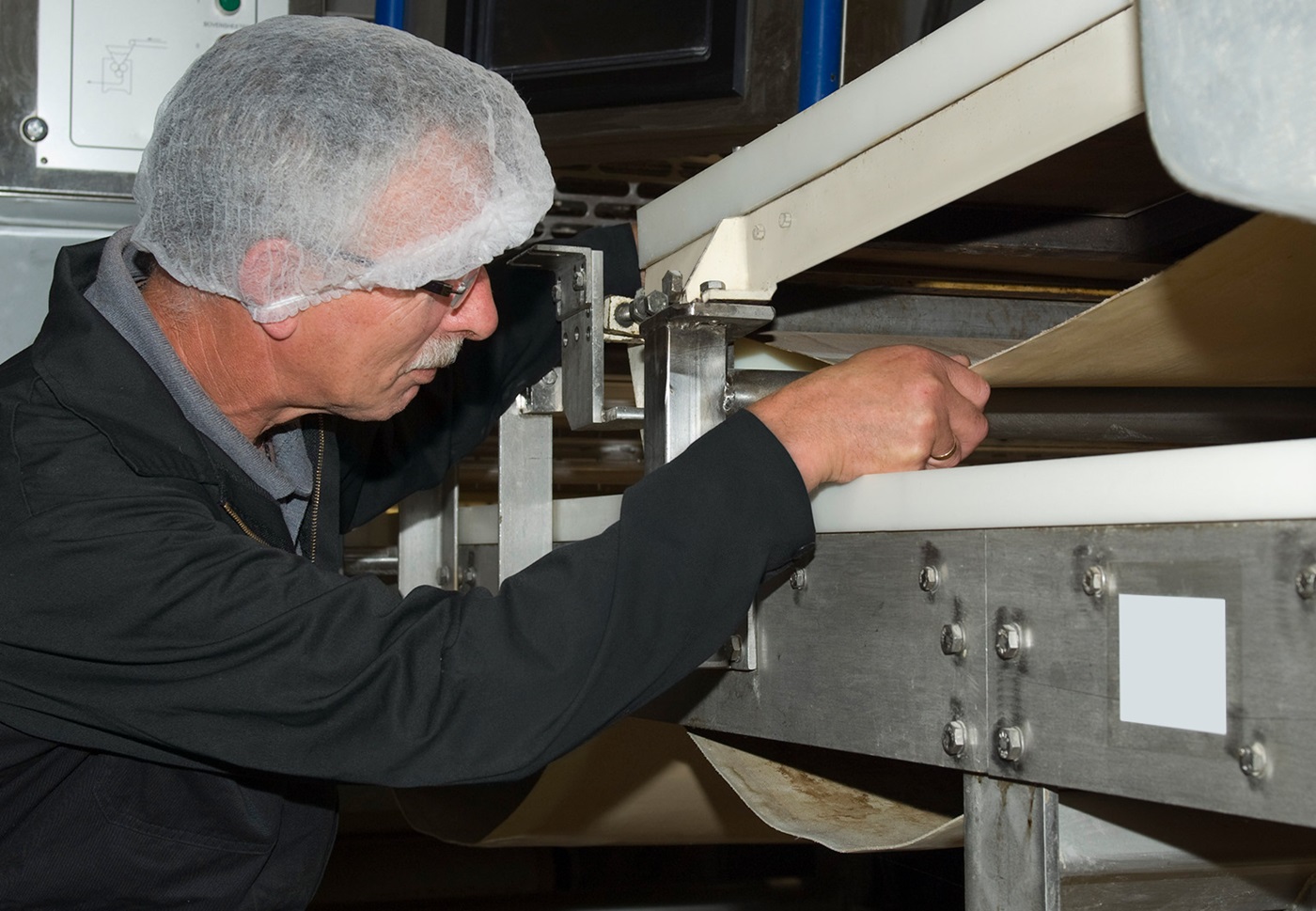4 tips for preventive maintenance of conveyor belts
Here are a few tips on preventive maintenance of conveyor belts that you can perform on your own."

Preventive maintenance of conveyor belts
Preventive maintenance involves a detailed inspection of the machine to check for parts malfunctioning or becoming weak from wear. Early awareness creates the opportunity to resolve an issue before it begins. Corrections can more easily be made and measures taken to prevent production problems in the future. This allows higher reliability and optimizes the service life of the conveyor belt.
Some possible issues to look for are belts that are not running straight, blocked rolls, broken bearings, damaged fabric, or a belt that is regularly catching or slipping. None of these situations necessarily have to mean that your belt is broken. Although the belt is often blamed when a machine breaks down, it can be the case that the bearings or other components of the conveyor itself are causing the problem. If the belt appears in good condition, but the problem persists, each part of the machine should be carefully inspected.
How to perform an ocular Inspection
The value of performing a regular ocular inspection cannot be emphasized enough. By simply examining visible surfaces and parts, you can save your company time, money, and labor.
You should ask four specific questions when inspecting your belt for damages.
Is the conveyor belt complete?
Begin by inspecting the belt itself. Can you see any damages? Are the belt joints in good condition? What do the belt pulleys, rolls, spindles, profiles, and sliding bed look like? Are bearings and rolls complete? A worn bearing could be why a belt runs off to one side. Take time to adjust and repair the smallest details of the machine.
Is the conveyor belt centered on the conveyor?
A conveyor belt should be centered for optimal transportation of a product. Check that it is precisely positioned between the rolls. Also, make sure that the belt pulleys, wheels, and rolls are installed and aligned. If they are not, there is a risk that the belt might start running off to one side.
Does the conveyor belt adequately transport products?
How does the conveyor belt perform during operation? A belt might work well when it is empty but then start slipping under the weight of a load. If a belt slips or rubs at a certain point, the heat from the friction can develop and, in the worst-case scenario, begin to melt the material of the belt. You should, therefore, adjust the belt with and without products.
Is the conveyor belt clean?
Some belts are more hygiene-critical than others, e.g., belts that convey food. It is, therefore, important to clean both the belt and the parts with which it is in regular contact. Uneven surfaces, rips, or cracks are all places where bacteria can potentially grow. Dirt and substances that get into the belt could lead to product contamination. Therefore, you should always carefully inspect and clean the belt.
Inspection frequency
How often you need to inspect your conveyor belt depends on a number of factors: the type of application, what environment the belt operates in, load size, and how often the belt is in use. There are a number of applications, belts, and carriers. Some belts operate in more demanding environments with extreme surrounding temperatures, such as ovens. Other belts convey very heavy products or products that contain toxic chemicals. Some need to be resistant to strong detergents. Each of these factors has an impact and will determine the focus of the inspection.
We are here to help
Do you need help with your inspection? We are experts in technical service. Our personnel will gladly visit your location in order to help examine, inspect, and service your machine at every level. We will write a report and suggest measures, such as which belts need to be replaced and what you should keep an eye on.